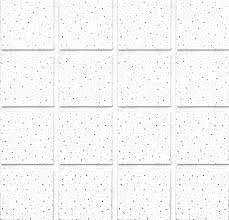- Afrikaans
- Albanian
- Amharic
- Arabic
- Armenian
- Azerbaijani
- Basque
- Belarusian
- Bengali
- Bosnian
- Bulgarian
- Catalan
- Cebuano
- Corsican
- Croatian
- Czech
- Danish
- Dutch
- English
- Esperanto
- Estonian
- French
- German
- Greek
- Hindi
- Indonesian
- irish
- Italian
- Japanese
- Korean
- Lao
- Malay
- Myanmar
- Norwegian
- Norwegian
- Polish
- Portuguese
- Romanian
- Russian
- Serbian
- Spanish
- Swedish
- Thai
- Turkish
- Ukrainian
- Uzbek
- Vietnamese
Dis . 03, 2024 18:55 Back to list
Ceiling Access Panel Standards and Specifications for Optimal Installation and Use
Understanding Ceiling Access Panel Requirements
When constructing or renovating a building, various elements must be considered to ensure functionality, safety, and compliance with building codes. One of these critical elements is the ceiling access panel. Often overlooked, ceiling access panels are essential fixtures that allow for easy access to the spaces above ceilings, including ductwork, plumbing, electrical wiring, and HVAC systems. This article discusses the key requirements and considerations for ceiling access panels.
Importance of Ceiling Access Panels
Ceiling access panels serve multiple purposes. First, they provide essential access for maintenance and inspection of hidden systems. In commercial buildings, regular servicing of HVAC units and electrical systems is crucial for efficiency and safety. Second, they facilitate repairs, ensuring that technicians can quickly access the required areas without unnecessary demolition. This not only reduces downtime but also minimizes repair costs.
Building Codes and Regulations
One of the primary considerations when installing ceiling access panels is compliance with relevant building codes. These codes vary by locality but generally cover structural integrity, fire safety, and accessibility. It's essential to consult the local building authority to understand specific requirements.
For example, fire-rated access panels must be used in fire-resistive construction to maintain the integrity of fire-rated ceilings. Such panels are specifically designed to provide the same fire resistance as the surrounding building components and are tested to meet performance standards. The National Fire Protection Association (NFPA) provides guidelines on the performance characteristics required for fire-rated access panels.
Size and Location Specifications
The size of the access panel is another important requirement
. It should be large enough to accommodate tools and personnel while also fitting within the structural space of the ceiling. Common sizes for ceiling access panels range from 12 inches by 12 inches to 48 inches by 48 inches, depending on the intended use.ceiling access panel requirements

Furthermore, the location of access panels should be strategic. They should be installed in areas that provide convenient access without compromising aesthetic appeal. Typically, panels are placed in hallways, closets, or other less-visible locations. It's also crucial to avoid installing panels in areas that may interfere with the function of lighting or the movement of objects or personnel.
Material and Durability
The materials used for manufacturing ceiling access panels significantly impact their durability and performance. Access panels can be made from various materials, including steel, aluminum, and plastic. While metal panels offer greater strength and fire resistance, plastic panels may be more lightweight and resistant to moisture, making them suitable for areas where humidity is a concern.
Regardless of the material, the selected access panel must be able to withstand the expected loads and conditions of its environment. Panels should also be finished appropriately to resist corrosion, especially in industrial or high-moisture areas.
Aesthetic Considerations
While functionality is paramount, aesthetic considerations should not be ignored. Ceiling access panels can be designed to blend seamlessly into the surrounding ceiling, thereby maintaining a clean and professional appearance. Many access panels now feature flush-mount designs and can be painted to match the ceiling color, minimizing their visual impact.
Conclusion
Ceiling access panels are a vital component in modern construction and renovation projects. They enhance the accessibility and maintenance of essential building systems while ensuring compliance with safety regulations and aesthetic standards. By understanding and adhering to ceiling access panel requirements, stakeholders not only improve the efficiency of building operations but also promote safety and longevity in their facilities. As always, consulting with professionals and local authorities is recommended to ensure compliance and make informed decisions regarding access panel installations.
-
Transform Interiors with PVC Gypsum Ceiling: A Stylish, Durable, and Moisture-Resistant SolutionNewsMay.19,2025
-
The Smart Interior Upgrade: Discover the Durability and Versatility of Gypsum Ceiling Access Panel SolutionsNewsMay.19,2025
-
The Smart Choice for Interior Design: Discover the Value of PVC Gypsum Ceiling SolutionsNewsMay.19,2025
-
Mineral Fiber Ceiling Tiles: The Smart Blend of Performance and AestheticsNewsMay.19,2025
-
Mineral Fiber Ceiling Tiles: The Superior Choice Over Gypsum for Sound and Fire SafetyNewsMay.19,2025
-
Mineral Fiber Ceiling Tiles: Eco-Friendly Strength and Style for Every CeilingNewsMay.19,2025







